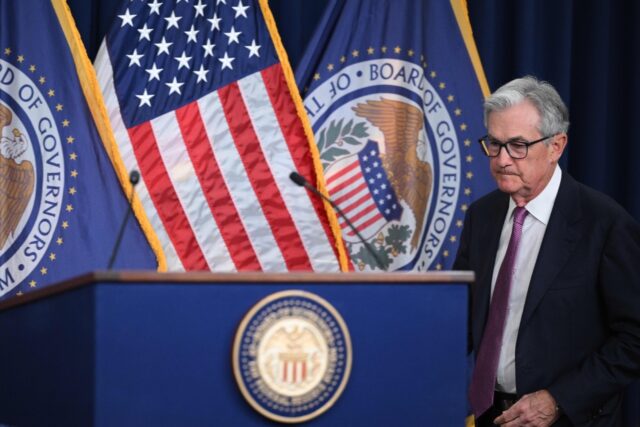The U.S. Federal Reserve raised its benchmark lending rate on Wednesday to the highest level since 2001 to tackle above-target inflation, and signaled the possibility of further increases ahead.
The quarter percentage-point rise lifts the key lending rate to a range between 5.25 percent and 5.5 percent, the U.S. central bank said, adding that it will “continue to assess additional information and its implications for monetary policy.”
The rate-setting Federal Open Market Committee (FOMC) used similar language when it voted to hold rates steady in June, and the latest statement suggests that policymakers are mulling another pause at their next meeting in September.
However, the Fed also said it would assess a range of data points “in determining the extent of additional policy firming,” which indicates that officials see the possibility of more monetary tightening ahead.
Speaking to reporters after the decision was announced, Fed chair Jerome Powell insisted that no decision has been taken to hike at every other meeting, as some analysts have suggested.
“We’re going to be going meeting by meeting,” he said, adding that the Fed would continue to adopt a “data-dependent” approach.
‘Long way to go’
At the previous FOMC meeting in June, the median forecast was for two additional rate hikes this year.
The latest quarter percentage-point rise, which was in line with analysts’ expectations, is the Fed’s 11th since it began an aggressive campaign of monetary tightening last March in response to rising prices.
Although inflation has continued to fall since the decision in June to pause rate hikes, it remains above the Fed’s long-term target of two percent — suggesting more policy action may be needed.
Unemployment has remained close to historic lows, while economic growth for the first quarter was revised up sharply on resilient consumer spending data.
“Inflation has moderated somewhat since the middle of last year,” Powell said on Wednesday.
“Nonetheless, the process of getting inflation back down to two percent has a long way to go,” he added.
Soft landing
The positive economic news has increased the chances of a so-called “soft landing,” in which the Fed succeeds in bringing down inflation by raising interest rates while avoiding a recession and a surge in joblessness.
On Wednesday, Powell reiterated that he felt a soft landing is still possible.
“It has been my view consistently that we do have a shot,” he said, adding: “That’s been my view, that’s still my view.”
Powell told reporters that his staff’s expectations for a recession to start later this year has diminished, as more positive economic data has come in.
“The staff now has a noticeable slowdown in growth starting later this year in the forecast, but given the resilience of the economy recently, they are no longer forecasting a recession,” he added.
While investors had more or less priced in a hike on Wednesday, they have been less confident about the chances of another increase at the next Fed meeting in September.
Futures traders currently assign a probability of just over 20 percent that the FOMC will raise rates again in September, according to CME Group.

COMMENTS
Please let us know if you're having issues with commenting.